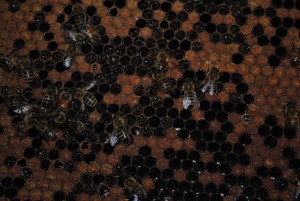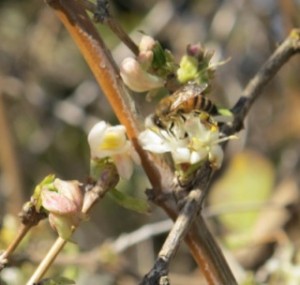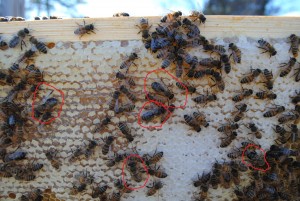The Season Begins Tomorrow!
It is with no small amount of trepidation that I prepare for tomorrow, the first real day of my beekeeping season for this year. It’s about average, although much later than last year (due to the warm Winter) and is marked by 5 or 6 day period that starts at around 60 degrees tomorrow and rises to the mid (or even upper) 60’s over the ensuing days. It’s the perfect time to start a few Nuc’s and get some full hive checks done!
My trepidation is due primarily to the fact that I have not been in (or even laid eyes on) 90% of my hives since mid-January. Between the weather and a surprise surgery to remove my gall bladder, I simply have not been able to get out. My biggest fear is that I will find a lot of dead-out’s (dead hives.) I have been spared this consequence in all of my Winters thus far, but it seems that I always come into March with this worry. Tomorrow will be a big ‘tell’. I’ve been told that a lot of beekeepers have experienced unusually large losses this Winter. I like to think that my beekeeping practices have insulated me from this threat, but tomorrow will be the real test. We shall see.
Unless things are truly terrible, I plan to create the first Nucs of the year tomorrow. Most likely, they will all be Deep Nucs (I have not mastered the art of creating Medium Nucs this early) and I will stock them with three frames of brood and a shake or two of nurse bees. At this time of year, I stock the Nuc’s with more resources then I will later in March or even in April (you don’t need as much ‘bee mass’ once the threat of long stretches of freezing weather abates.) This is likely to put my first Nuc sales in mid-April, barring some unfortunate event.
When I go into my hives tomorrow, my first mission is to count the frames of brood. I have no idea what I am going to find, but I am looking for 6 to 7 frames of brood. If they have less, I simply mark that in my journal to help extrapolate when the hive will have the right build to spawn a Nuc. In some of these cases, I might look for the queen (mainly if it’s a hive with an unmarked queen that I want to mark.)
If the hive has the right number of frames, I will create a Nuc off of it. Mission 1 is to locate the queen and isolate her. Sometimes I drop her in a closed up Nuc box that I carry with me. In other cases, I just put her on the furthest frame in the super and grab the frames that I need for the Nuc. While counting the brood frames, I am always noting which ones have eggs, so I generally know what I need. Ideally, I’ll grab another frame that has both honey and pollen and place a frame of foundation on the far side. I literally set the Nuc up in the same yard, level it right and leave. In two weeks, I’ll come back and give them a feeder. A week later, I’ll come back to confirm that I have a queen in the Nuc. If there’s any doubt, they get another frame of eggs.
In most cases, I create a Nuc off of every hive that is ready for one. But, some hives are lower on my Good Hive Scale. Nuc’s created off of those hives are for me and, since I track my queens, I know to watch the hive for whatever bad traits that its parent had (to take action on it in the Fall).
Hopefully, my next post will be one of jubilation and not agony!



